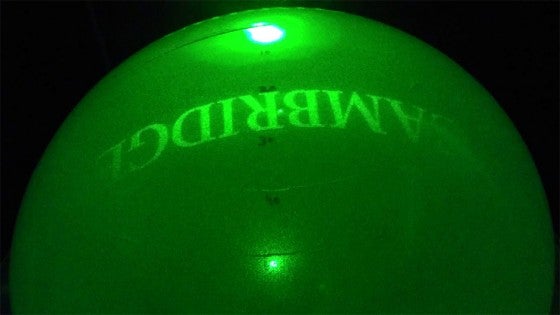Carbon Nanotubes Generate The Smallest 3-D Hologram Pixels Ever
Ever-tinier pixels mean ever-higher resolutions and a wider angle of view for the holographic systems of the future.

Holography is one of those “it’s-2012-where-is-my-holodeck” kind of sciences–long promised by science fiction, still far from a practical communications tool. But the field is moving forward in fits and starts, even if a complete technology package that will beam moving holograms onto our tabletops, Princess Leia-style, is still on some far horizon. Example: Researchers at Cambridge in the U.K. have recently generated holograms with carbon nanotubes for the first time, generating the smallest hologram pixels ever.
These small pixels translate directly to higher resolution holograms as well as holograms with a wider field of view. “Smaller pixels allow the diffraction of light at larger angles – increasing the field of view. Essentially, the smaller the pixel, the higher the resolution of the hologram,” said Dr. Haider Butt, a researcher at Cambridge’s Centre of Molecular Materials for Photonics and Electronics, in a press release.
If small is what you’re going for, carbon nanotubes are ideal. Just a few nanometers across, the carbon nanotubes used by the Cambridge lab are something like 700 times thinner than the average human hair. They are essentially used as diffractive elements that project the individual pixels that make up the hologram. Prearranged in the correct way, they are able to generate static holograms of the highest resolution ever seen.
Of course, these are just static holograms. The real holy grail in this field is realtime holographic motion–the ability to generate holographic video and even broadcast it live, in realtime, across the Web. Researchers at the University of Arizona have for the past couple of years been demonstrating small but significant advances in video holography, as have researchers at MIT and elsewhere. Butt says the next steps for his lab follow the same trajectory: Find a cheaper alternative to carbon nanotubes that can generate these kinds of tiny pixels, and explore possible means of creating moving holograms at this high resolution.
[Cambridge via IEEE Spectrum]